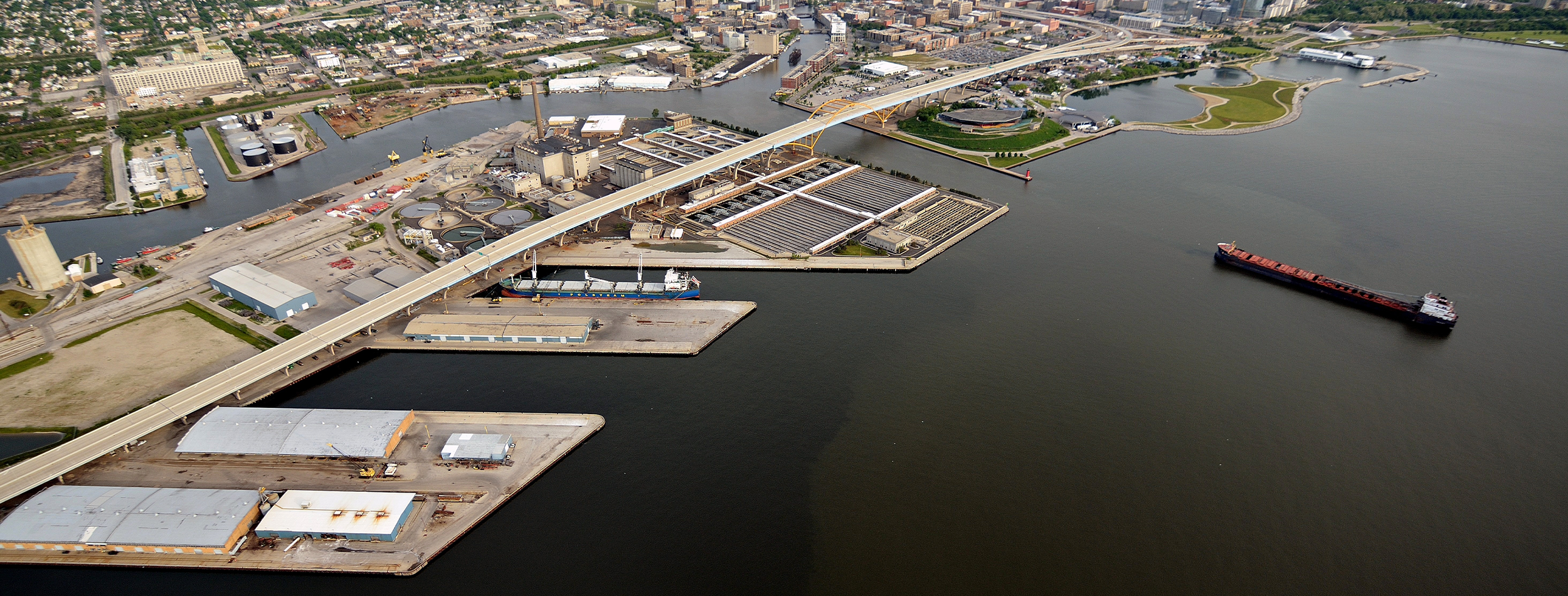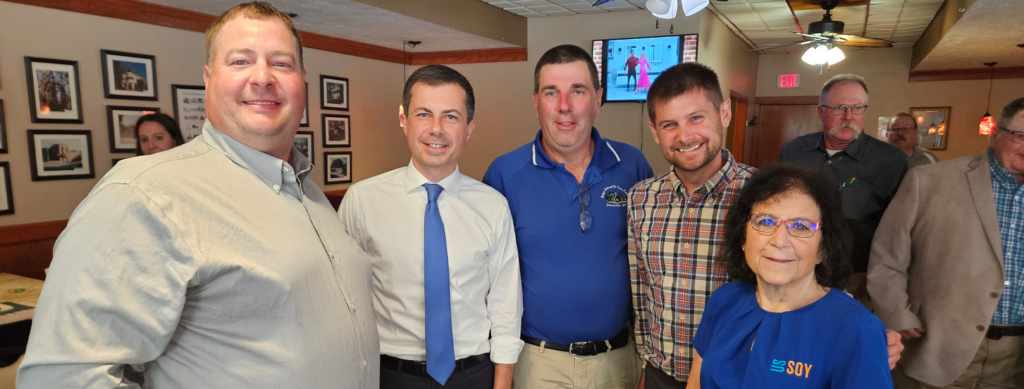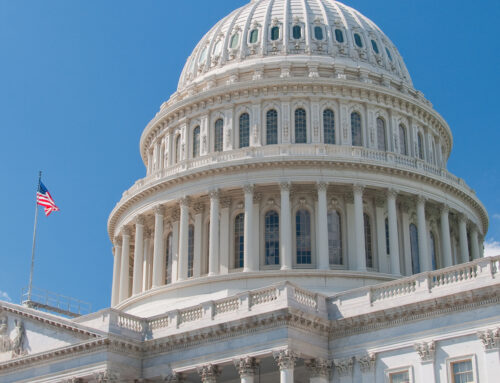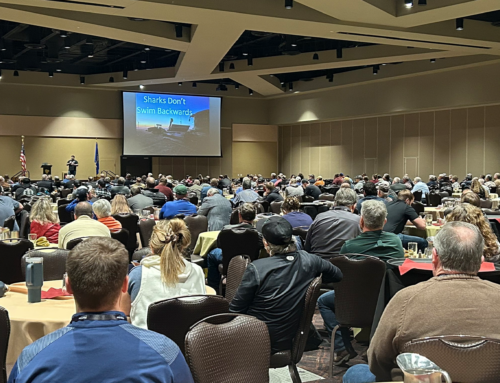
Wis. soy farmers find pathway with Transportation Secretary
Share This
The opportunity to break bread with a Cabinet secretary is a rare one. Among a dozen leaders who shared a breakfast table with Secretary of Transportation Pete Buttigieg on July 31 at a diner in Milwaukee, four were leaders representing the Wisconsin Soybean Program (WSP).
“You couldn’t hide if you wanted to,” joked Matt Rehberg, treasurer of the Wisconsin Soybean Association (WSA). “It was just a great one-on-one conversation with the secretary.”
Rehberg was joined by WSA Vice President Doug Rebout and Wisconsin soybean farmers Jonathan Gibbs and Nancy Kavazanjian. During the meeting, WSP and industry stakeholders engaged with Sec. Buttigieg on several ag-related infrastructure issues, including improvements to roads and bridges; the Mississippi River; and diversifying market access via the Great Lakes-St. Lawrence Seaway System.
“It was a neat conversation to have up and down the food chain, from us as producers all the way up to the water highways,” Rehberg said, “and the secretary’s perspective on it all was very interesting.”
Rebout said farmers established a quick rapport with Sec. Buttigieg, who was in Wisconsin promoting the Biden administration’s infrastructure investments from the bipartisan Inflation Reduction Act, the nation’s largest infrastructure project in 70 years.
“He connected to our industry and really, in particular, he understood our challenges,” Rebout said. “We didn’t have to explain much to him. He knew the issues and asked good questions. We got our points across, and we each got to tell our own stories and how different things are affecting us and everything.”

WSA directors and Wisconsin farmers visit with Transportation Sec. Pete Buttigieg (second to left) following a breakfast meeting on July 31, 2024. Afterwards, Sec. Buttigieg and farmer leaders toured Port Milwaukee.
Following the hour-long conversation, Buttigieg toured Port Milwaukee and the DeLong export facility, which was awarded a $9 million grant from the IRA. The $40 million facility, located on the west side of Jones Island, will be one of the first on the Great Lakes-St. Lawrence Seaway (GLS) system to handle various agricultural commodities via truck, rail and international vessel, including dried distillers grains with solubles (DDGs).
This facility will open Wisconsin’s maritime and agricultural economies to new international markets. Future service at the facility could include exports for Wisconsin-grown soybeans, corn and grain.
“The new agricultural maritime export facility that opened last summer is already helping farmers from across the heartland sell their product around the world,” Buttigieg said. “Expanding the capacity by more than 1.3 million bushels a year means more American farmers can sell their excellent product to the world through this port.”
The Wisconsin Department of Transportation has estimated the DeLong terminal will generate $63 million in new statewide economic impact annually, increasing exports through Port Milwaukee by as much as 400,000 metric tons per year. Farmer leaders from WSP will tour the facility in early August as part of the Wisconsin Soybean Marketing Board’s See For Yourself tour.
“Right now, they can only handle basically one product at a time,” Rehberg said. “Their expansion is going to allow them to handle multiple products at the same time, so that’ll increase the potential of that port dramatically.”
The event also included Randy Romanski, secretary of the Wisconsin Secretary of Agriculture, Trade, and Consumer Protection; Milwaukee Mayor Cavalier Johnson; Port of Milwaukee Director Jackie Q. Carter and Tom Bressner, executive director of the Wisconsin Agri-Business Association.
“To have WSA and WSP be able to visit with the secretary and have a seat at the table is just amazing,” said WSA President Sara Stelter, who was invited but unable to attend. “Together, we’re helping to put the Port of Milwaukee on the map.”



